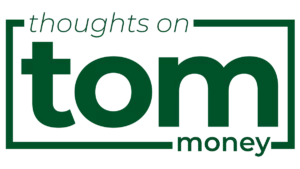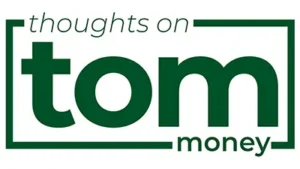‘Tis The Season
“He’s making a list, He’s checking it twice…”
These lyrics might be seasonally appropriate, but they are also topic appropriate, as today we are going to discuss checklists – why use them, how to use them, and the impact they can have.
But first, I’ll start with a story…
From Sales to Service
In my early 20’s I was a manager at a fitness gym. I was well primed for this role, as I grew up hanging around a racquetball club my dad was the manager of, and I spent my teen years competing as a cyclist, which had me in the gym daily as part of my training regimen.
My familiarity with the gym led me to work there, but how did I climb the ranks to management? Was it my leadership skills or my ability to identify and develop talent? I wish this were true, but I think it was primarily because I was good at selling gym memberships, and I sold a lot of them.
For most of my time working at the gym, it was very much a sales culture. It was all about selling more gym memberships. We started our days early, worked into the evening, and grinded through the weekend. This promotion, that deal, this deadline, these sales goals, etc.
The company I worked at was growing rapidly and expanding its locations across the country. At some point, the leadership realized that retaining current members was just as important (and cost less) as acquiring new members. This created a big shift in the culture, from sales to service.
Reporting For Duty
At the helm – our CEO, during this transition – was a former Home Depot executive and a Naval Academy graduate. Interestingly enough, he actually played on the Navy basketball collegiate team alongside NBA Hall of Famer David Robinson. It was this man that led our organization from a focus on membership sales to a focus on “clean, friendly, and well-maintained.” He implemented customer feedback surveys conducted by J.D. Power and Associates and started to rank management based on how their gyms scored on these metrics of cleanliness and friendliness.
Standing at 6’7” with the demeanor of a Naval Officer made this CEO quite intimidating. I have one vivid memory of touring the gym with him, and I think in the 20 minutes we spent together, he may have said two words. He walked the gym inspecting every nook and cranny, notating things that needed to be fixed or cleaned and staff members that needed to smile and greet the customers. He was making a checklist.
Unfortunately, this tour/inspection was not capped off with a rave review. Later I was given an extensive checklist from my superior, and it was my job to execute the needed improvements. Like I mentioned, I was great at selling memberships and perhaps not so good at running a gym.
Checklists. That’s how this man operated. He put on the eyes of his customers and looked for opportunities to make things better. Then it was his team’s job to execute on that checklist – checking off one item at a time to create incremental, measurable improvements.
Analysis Paralysis & Eating Elephants
“The enemy of a good plan is the dream of a perfect plan.” – Carl von Clausewitz
I didn’t enjoy that experience touring the gym that day – I felt like a failure, I felt defeated – but I remember it well, and I learned a lot from it. Checklists are powerful, and they are an efficient way to create change.
I’ve seen many advisors and investors obsess over creating the “perfect” plan that they spend all of their time theorizing about, tinkering with, and perfecting. Yet, they never get to executing on that plan. I like how General Patton said it, “A good plan, violently executed now, is better than a perfect plan next week.”
Checklists help you get to execution quickly, as they map out the to-do items, and they are a constant reminder of what is still unfinished. Once an item is completed, you get to experience that oh-so-good feeling of scratching a checkmark next to the task. Your checklist breaks down large objectives into small bite-sized tasks and gives you a graphic depiction of your progress. As they say, “How do you eat an elephant? One bite at a time.”
Checklists Are Key
Now, perhaps you haven’t anguished through a gym tour with a 6’7” Naval Officer and had this checklist concept branded into your memory. That’s ok because this is a learned behavior – this means you can pick up this habit and start applying it to your financial and personal life. I make checklists for everything – I have a list of pending client projects pulled up on my computer every day; if you’re a client of mine, you are familiar with the meeting recap checklists I send out, and yes, even my grocery store visits are always accompanied by a checklist.
This habit or discipline isn’t just a quirk of my character; this is a best practice across many professions. Atul Gawande, an American Surgeon, and Author dedicated a whole book to the subject titled, The Checklist Manifesto. Gawande provides examples across all different industries – from business to medicine – highlighting how checklists can reduce error rates, improve efficiency, organize tasks, and save lives (seriously). I remember being in the operating room for the birth of both of my boys (Caesarean sections) and watching the team – the doctor, the anesthesiologist, and the nurses – go through their checklist ritual. All the way down to the nurse dictating the count on the used gauze that she was disposing of to assure that all the materials that came into the room were leaving the room.
Now, Your Turn
So, are you a “checklister”? If you’re not, that’s ok. This is a great time of year to collaborate with your advisor and create an end-of-year checklist. Here’s an easy way to get started:
- Start with broad categories to begin organizing your potential checklist items. For personal finance, that’s things like Tax Planning, Estate Planning, Insurance, Charitable Giving, Cash Management, Investment Allocations, etc.
- Next, start asking yourself questions relative to these categories: Are there any tax strategies that I should be implementing before the end of the year? Are there any areas of my life in which I am potentially underinsured? Is there a more efficient and organized way to conduct my charitable giving? Is there an opportunity to reduce my borrowing costs?
- Then, begin bullet pointing your action items relative to the questions you asked and discussed with your advisor.
- Lastly, prioritize your list. Prioritizing should be based on two metrics – importance and difficulty. Ideally, you want to tackle the most important and impactful items first, but some of those items might be time-consuming, so you might want to knock off the easier to complete items first. There is nothing wrong with tackling the simpler obstacles first. This is a great way to get a quick win under your belt and build a little momentum.
The Key: Get Started
The spark for today’s discussion was that I just completed my own personal end of year financial checklist. This consisted of maximizing my tax-deferred contributions (HSA, 401(k), etc.), completing some back-door Roth conversions, reviewing my estimated tax payments, funding my Donor Advised Fund contributions for the year, working with our investment team to re-balance / adjust my investment allocation, completing a mortgage refinance application, and a few other planning items. I was telling a co-worker that it felt terrific to get all of that done, and it was nice that I had the checklist all mapped out from when I executed most of these items at the end of last year.
I’ve always found checklists very rewarding because your checklist provides a great snapshot of what you accomplished for the day or across a project. It’s an opportunity to not only celebrate the culmination of a task but also all the steps and action items within that project.
Again, it’s easy to talk about finance, debate about finance, and share best ideas, but the real value is in the execution. Checklists are the tool or vehicle that leads you to execution and provide the road map for those incremental improvements discussed.
The key is just to get started. So, what are you waiting for? Go make your checklist.







